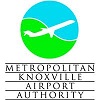
Knoxville has enjoyed a number of aviation entrepreneurs
 (EDITOR’S NOTE: This is the third in a three-part series about air service – past, present and future – in the Knoxville/Oak Ridge Innovation Valley region and beyond.)
(EDITOR’S NOTE: This is the third in a three-part series about air service – past, present and future – in the Knoxville/Oak Ridge Innovation Valley region and beyond.)
Aspiring entrepreneurs in the region can identify with the early experiences of those who paved the way for Knoxville’s commercial and general aviation facilities.
During our recent teknovation.biz interview with Bill Marrison, President of the Metropolitan Knoxville Airport Authority (MKAA), Becky Huckaby, the airport’s Vice President of Public Relations, noted the entrepreneurial nature of the early aviation pioneers in the community. They were chronicled in a book, Aviation in Tennessee, written by Jim Fulbright.
Here are some of the highlights from the section of the book focused on Knoxville.
- Knoxville’s first unofficial airport was “started” in 1910 during the Appalachian Exposition. It was named “Cal Johnson Racetrack” and located near Chilhowee Park.
- Several airfields existed by the early 1920 due to “entrepreneurs” whom the book said “learned to fly for the adventure of it.” They included Tom Kesterson (West Knoxville), Charles Griffith (Bearden) and Harold Mears (Holston Drive near Boys Bridge). Other fields these pioneers used were the Whittle Springs Golf Course and Dickinson’s Island, the site that would become the Downtown Island Airport.
- The first documented “aviation start-up” was established in 1923 when several area business people founded Knox Aero Corporation in West Knoxville, sold stock in the enterprise, purchased an airplane, hired a Chief Executive Officer (i.e., pilot), and operated an aircraft sales agency.
- By 1927, Knoxville had its “first official airport” located on Sutherland Avenue, the current site of West High School, Fulbright said that “the field had been used by local flyers for years, but with the addition of a small gas station and hangar . . . , it became a designated airport.”
- The City of Knoxville purchased the site (i.e., the founders exited the start-up) and opened the first municipal airport that carried the name of the current commercial facility – McGhee Tyson.
- The previously referenced Tom Kesterson opened Island Airport on Dickinson’s Island in 1930. Ironically, it was home to the city’s first commercial air service when “American began flying a mail route from Nashville to Island Airport and on to Washington, D.C., and New York,” Fulbright wrote. The twice daily flights also carried passengers between Knoxville and the nation’s capital.
- By 1935 the federal overseer of air service – Civil Aeronautics Bureau – told Knoxville officials that neither commercial facility – the original McGhee Tyson or Island – could meet the expected needs. In other words, you need to “grow the company.” Land was purchased in Blount County in early 1936 and, as noted in a previous teknovation.biz article in this series, the first commercial flight to land at the new McGhee Tyson Airport did so on July 29, 1937.
- Like any new endeavor, even 75 years ago, there was some controversy over the naming of the airport. Blount County had its name, but Knoxville had promised to retain the McGhee Tyson name.
- As the aviation industry evolved, again much as a new technology platform does, there were a number of entries, acquisitions and exits. Fulbright wrote that the first “fixed base operator at the new airport was Knox-Flite, a company established by Sonny Rising. In 1939 Rising began working for the Civil Aeronautics Authority and sold his four aircraft. A young pilot named Ferris Thomas, who had been flight instructing for Knox-Flite, borrowed $1,800 and bought two of them.” Two years later, Ferris “expanded” his start-up when he bought a hangar and assumed the lease at Island Airport. He left for the military a year later and figuratively and literally “exited” his company. For a period of time during the war, the tiny airport on an island maximized revenues by growing bean and corn crops everywhere but the strip.
There’s more about the history of the Knoxville airport at http://www.tys.org/history-of-the-airport.


